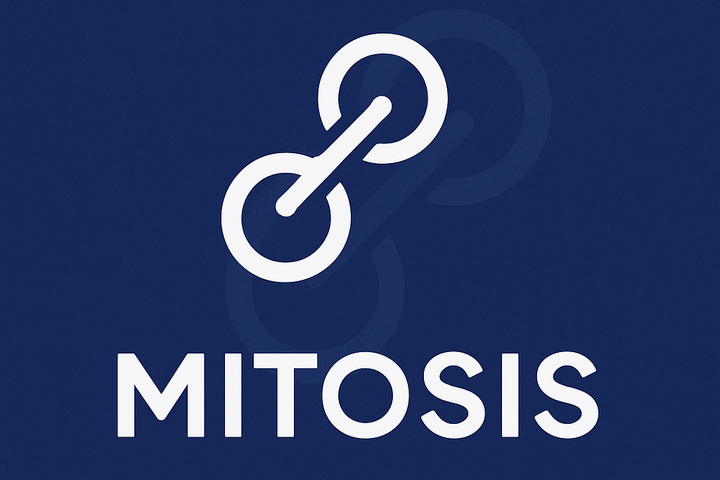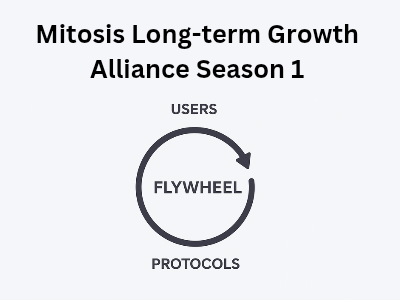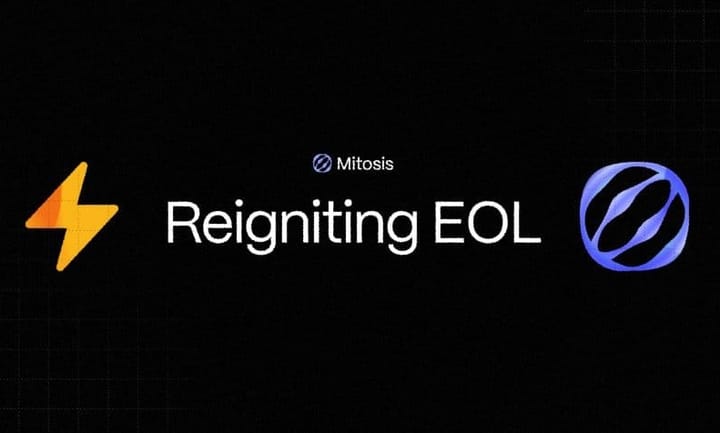MapleStory Universe: Web3 Innovation in Play-to-Earn Gaming

The beloved MMORPG MapleStory is taking a leap into Web3. MapleStory Universe is Nexon’s ambitious project to expand the MapleStory IP into blockchain-powered gaming, complete with play-to-earn (P2E) mechanics, NFTs, and community-driven content. In this article, we’ll explore how MapleStory Universe innovates in P2E gaming: its integration with Web3 (on Avalanche), gameplay and NFT mechanics, and the ways it engages the community to shape the game’s future.
From Nostalgic MMO to Web3 Universe
MapleStory is a legendary 2D side-scrolling MMO that first launched over 20 years ago. It pioneered free-to-play gaming and enchanted millions of players with its cute characters and endless content. Now, MapleStory Universe is bringing that nostalgia into the blockchain era. Nexon, the publisher, created a dedicated initiative called Nexpace to transition MapleStory from Web2 to Web3. The flagship product is MapleStory N, a blockchain-based MMORPG that launched in May 2025.
The game is built on an Avalanche Subnet – a custom Avalanche blockchain tailored for MapleStory Universe. This provides a secure and scalable foundation, but more importantly, it allows for gasless gameplay and seamless user experience. The developers recognized that to win over traditional gamers, the Web3 aspects (like wallets or gas fees) should not be barriers. By using a subnet, MapleStory N can cover transaction fees or design the system so that players don’t even notice blockchain is under the hood. The result is a game that blends nostalgic 2D gameplay with innovative Web3 functionality.
During its playtests, MapleStory N saw over 31.5 million on-chain transactions, showcasing how active the in-game economy can be when every item and action might be recorded. Despite skepticism from some gamers about crypto, Nexon believes Web3 is key to the future of games. By lowering entry barriers (making blockchain tech “invisible” to players) and emphasizing fun, MapleStory Universe aims to onboard gamers into crypto without them feeling intimidated.
Gameplay and P2E Mechanics
At its core, MapleStory N remains a MapleStory game: a colorful, side-scrolling RPG where players complete quests, battle monsters, and level up in a vibrant fantasy world. What’s new is the play-to-earn (P2E) element powered by blockchain:
- All significant in-game items are NFTs. Weapons, equipment, rare loot, even user-created cosmetic items can be minted as MapleStory NFTs. This gives players true ownership of their loot – they can trade or sell items freely on the marketplace, or even move them outside the game’s ecosystem (to external wallets or NFT markets) if they wish. It’s a paradigm shift from traditional games where items are just data on company servers.
- Earning through Gameplay: As players grind and farm for items, those items have real-world value thanks to NFT marketplaces. For example, a player who spends time defeating a rare boss might earn a unique NFT item that they can sell to other players for cryptocurrency. This introduces a real play-to-earn economy: your time and skill can translate into tangible rewards.
- NXPC Token: MapleStory Universe introduced a native token, referred to as $NXPC, which powers the game’s economy. Players can earn NXPC through gameplay achievements, events, or contributions, and use it within the ecosystem. NXPC serves as both a currency and a governance token for the universe. It’s meant to “enhance the in-game experience while supporting the broader MapleStory ecosystem”. One key aspect: contributors can use NXPC to create in-game items, which we’ll cover in the next section.
- Gasless Transactions: On the Avalanche subnet, in-game transactions (like trading an item or minting an NFT) do not require players to manually pay gas fees in AVAX or ETH. The infrastructure is likely set up so that either fees are paid in NXPC or covered by the game. This is huge for user experience – it feels like normal gaming but with the benefits of blockchain. The game’s blockchain is highly optimized to handle the frequent micro-transactions of an MMO (hence the 31 million tx in testing).
- Secure Economy: Because it’s on a blockchain, all trades and item creations are transparent and secure. Cheating (duplication of items, hacking) is much harder, since items are recorded as NFTs and can’t be counterfeited. The economy can be monitored by both devs and players to ensure balance.
MapleStory N essentially takes the familiar loop of MapleStory – kill monsters, get loot, upgrade gear – and supercharges it with real ownership. It’s still free-to-play, but now with a twist: players can earn real value from their adventures. This “earn” aspect is balanced carefully to avoid making the game pay-to-win; Nexon has indicated they want to maintain a fun gameplay-first approach, using Web3 elements to boost engagement and longevity.
NFTs and In-Game Assets
MapleStory NFTs lie at the heart of the new experience. Let’s break down how they work and what you can do with them:
- Item Ownership: Every valuable item in MapleStory N can be “NFT-ized”. If you get a powerful sword or a rare cosmetic outfit, it’s issued as an NFT in your wallet (likely an integrated game wallet). This means you truly own that item outside the game’s database – it’s in your custody on the Avalanche blockchain. If MapleStory N were ever to shut down, you’d still have proof of owning that asset.
- Trading and Marketplace: MapleStory Universe includes a Marketplace dApp where players can list and trade their NFT items. This is akin to an auction house, but on Web3 rails. If you earn a rare item, you can sell it for NXPC tokens (or possibly other crypto) to players who want it. Conversely, if you want a shortcut, you could buy an item instead of grinding. This marketplace is player-driven, creating a real economy of supply and demand for virtual goods.
- Navigator and Explorer: They mention a Navigator app, which likely is an interface where players can discover properties of items and NFTs in MapleStory Universe. Perhaps it’s a lore-filled index or just an NFT explorer to see what’s available and historical stats of items.
- Staking and Saving: Not only items, but the currency USDe (Ethena’s stablecoin) is integrated – actually, scratch that, Ethena is in Zootosis. Focus on MapleStory: Another aspect is that players might stake NXPC or NFTs for rewards, but that’s speculative.
- Lowering Entry Barriers: MapleStory Universe is committed to making blockchain easy. They likely have seamless wallet creation (maybe using social login as Magic Labs does – interestingly Magic Labs wallets power some games). And they possibly subsidize initial actions so new players aren’t hit with “connect wallet” and gas steps. The Avalanche blog noted MapleStory Universe uses an Avalanche Subnet with AvaCloud support so they didn’t need a separate blockchain partner; Ava Labs helped them with backend so they can focus on gameplay.
- Safety and Moderation: By giving item creation power to community (in next section), one might worry about balance. Nexon likely retains some control (like proposals for new items go through review or cost a lot of NXPC to mint to avoid spam). Also, NFT trading can be speculative, so they might impose caps or fees to stabilize the economy. They explicitly mentioned analyzing impacts of “carry-over items” (meaning moving assets between games or versions) carefully.
In summary, NFTs in MapleStory Universe turn the game’s looting and crafting into something that has lasting value and player agency. It “tangibilizes” the intangible: your achievements can be collected, traded, and even displayed outside the game. MapleStory Universe is thereby not just a game but a platform where the community can build and own parts of the universe.
Community-Driven Content and UGC
One of the most groundbreaking aspects of MapleStory Universe is its focus on community-driven content. In traditional games, only the developers create new items, quests, or features. Here, Nexon is opening the doors to players and creators:
- User-Generated Content (UGC): MapleStory Universe plans to let players, artists, and developers create content for the game. This could be designing a new cosmetic item, building a custom map or mini-game, or even writing quests. According to Nexon, they aim to provide “opportunities for players, creators, and developers to contribute to the game’s evolution through UGC and applications, and be rewarded with ecosystem tokens”. This is huge: it effectively crowd-sources creativity.
- Item Creation by Community: A concrete example: community members will be able to participate in item creation, a role traditionally held only by the game’s developers. Using the NXPC token, contributors can propose and create new in-game items (perhaps new equipment designs, outfits, etc.). If approved, these get minted as NFTs in the game. It’s implied that NXPC might be required or used in governance for this process. By doing so, MapleStory Universe fosters a “community-driven economy”, where players who enrich the game also benefit.
- DAO-like Governance: While not explicitly called a DAO, MapleStory Universe likely has governance elements. NXPC could allow voting on proposals – e.g., which new content to include, or the direction of game updates. This gives the community a say in shaping the IP’s future. Nexon’s team said they built a platform where players “don’t just participate, but actively shape the worlds they inhabit”.
- Synergy Apps: MapleStory Universe isn’t just one game; it’s pitched as a virtual world ecosystem. Besides MapleStory N (the core game), there are “Synergy Apps” – dApps that complement gameplay. Examples given: the Marketplace (for trading NFTs) and Navigator (for discovering item info). We might see more, like:
- Creator Workshop: a tool for user-creators to design items or maps.
- Guild or Community Hubs: where communities can manage their assets or events.
- These apps bolster user engagement beyond the main game, integrating Web3 utilities with gaming.
- Rewards for Contribution: Contributing isn’t just altruistic – those who create value can earn tokens (NXPC). MapleStory Universe essentially sets up a creator economy. If you design a hit cosmetic NFT, you might earn a share of the sales. This aligns incentives: passionate fans can become co-creators and entrepreneurs within the game world.
It’s a slightly philosophical shift: the game world becomes more of a platform or sandbox, and the players become stakeholders. MapleStory’s IP, with 250+ million global users historically, is enormous. By involving that community in creation and governance, Nexon taps into a huge well of creativity and loyalty. It’s a bold experiment in handing partial control to the community while maintaining overall guidance to keep the game coherent.
Web3 Integration and Community Engagement
MapleStory Universe showcases how a Web2 gaming giant can embrace Web3 to enhance, not replace, the gaming experience:
- Avalanche Partnership: The choice of Avalanche Subnet is strategic. Avalanche provides high throughput and subnets allow custom blockchains. This means MapleStory Universe could have its own rules (e.g., KYC if needed, or custom VM logic) and doesn’t compete with traffic on the main Avalanche chain. According to Ava Labs, MapleStory Universe moved to Avalanche for the network’s security and its proven support for games. Using AvaCloud service, Nexon got technical support to launch without needing a huge blockchain dev team.
- Mainstream Onboarding: One major goal is to bring mainstream gamers into Web3. By making gameplay secure and gasless, players don’t experience the typical friction of blockchain. MapleStory N likely has an integrated wallet that might use social logins (Nexon accounts) and hides private keys in a secure way (possibly using Magic’s wallet tech, speculation since Magic Labs was mentioned in context of MapleStory by others).
- Education through Fun: Many gamers are skeptical of NFTs (fearing pay-to-win or scams). MapleStory Universe tries to counter that by offering real utility (the game is fun and NFTs have purpose in it) and nostalgia appeal. If you loved MapleStory, the idea of actually owning that cute Orange Mushroom pet or Snail is enticing. And if you can earn some money trading loot, that’s a bonus. Nexon emphasizes that half of all players in tests consistently played, implying the Web3 didn’t deter them.
- Long-Term Vision: Nexon calls this launch “the beginning of a new chapter in gaming history”. Grand words, but they signal a long-term plan. MapleStory N is the first game in the Universe, with more to come. Possibly they could integrate MapleStory’s other versions or entirely new IPs into the Universe, using NXPC as a unifying token. The Avalanche blog hints MapleStory Universe could expand into additional gaming IP.
- Economic Design: The economy is designed to mirror real-world economies in some ways. For example, there could be inflationary/deflationary mechanics, sinks for tokens (like item minting costs), and measures against runaway speculation. By analyzing and controlling carry-over items or multi-game use, they ensure one game’s economy doesn’t wreck another’s.
- Community Support: Already, MapleStory Universe has social channels, presumably a Discord or similar for players to discuss and vote. They are likely nurturing a creator community, maybe holding contests for item designs or providing creation tools. This engagement is vital – the success of the community-driven model hinges on active participation. Early signs are good: hype is high (called “most anticipated crypto game of 2025” in some circles), and Nexon has 100+ people on the project to support it.
In summary, MapleStory Universe is a pioneering attempt to blend a popular Web2 game with Web3 principles. It’s not throwing away what makes MapleStory great – the fun, the cute art, the grind – but enhancing it with digital ownership, player economics, and community governance. For players, it means their time and passion can be rewarded, and they have a voice in the game’s evolution. For the gaming industry, it’s a case study of how to do crypto gaming right: by focusing on fun and community first, and weaving in blockchain in a meaningful, accessible way.
A New Chapter for Play-to-Earn
MapleStory Universe could be a watershed moment for play-to-earn gaming. It takes a proven game IP with a massive fanbase and infuses it with the latest Web3 tech. The result is not just a game, but a living world with an open economy and collaborative creation. This aligns well with the broader trends in crypto – the idea of asset tokenization and community ownership isn’t just for DeFi, but for virtual worlds too.
Of course, challenges lie ahead. Balancing a game economy where items have real-world value is tricky. There’s risk of gold farmers, speculators, or even regulatory questions (when does a game asset become a security?). Nexon will have to continue fine-tuning the system, perhaps imposing trade limits or using off-chain mechanisms for minor items to reduce blockchain load. They have acknowledged careful analysis of these issues.
Yet, the upside is enormous. If successful, MapleStory Universe might set the template for other major studios: showing that you can respect players by giving them ownership and stake, and in return, the game thrives with a passionate, invested community. The community-driven ecosystem could lead to content and innovation that a single company might never achieve alone – imagine new game modes or spinoff games emerging from the community efforts.
In a philosophical sense, MapleStory Universe asks: What if the game world belonged to its players? And it answers with an early example of that vision. Players can literally own a piece of Maple World, whether it’s a famed sword, a plot of land, or a new questline they wrote. Long-time fans may find that deeply rewarding – it’s the next level of being part of a game’s story.
As 2025 unfolds, MapleStory N will likely add more Web3 features: perhaps guild governance, eSports tournaments with NFT prizes, or integration with DeFi (imagine staking your game earnings in a yield farm). The community might surprise Nexon with uses of NXPC and NFTs beyond what was planned (maybe using NXPC in external DeFi or creating fan-made NFT collections). The MapleStory team’s willingness to adapt and support emergent behavior will be key.
To conclude, MapleStory Universe is one of the most promising bridges between traditional gaming and Web3. It leverages blockchain to empower players without losing the essence of gameplay. By doing so, it not only modernizes a classic franchise but also contributes to shaping the next cycle of crypto adoption – one where fun and entertainment drive newcomers into using blockchain, fulfilling the oft-repeated promise of “mass adoption”. If you’re a gamer who always dreamed of earning tangible rewards for your epic grinding, or a creator who longed to put your mark on a game world, MapleStory Universe might just be the start of something special – a universe where the lines between player and creator, consumer and stakeholder, begin to blur in exciting new ways.



Comments ()